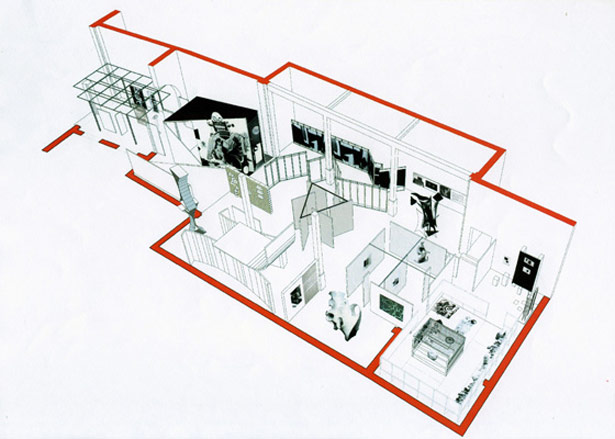'This is Tomorrow (2010)' exhibition, London

The Whitechapel Gallery is bringing its hugely influential show, 'This is Tomorrow', vividly back to life with unique and rarely seen archive material this month. The 1956 exhibition was a watershed moment in postwar British art, cited as the show that launched - and named - pop art.
The idea for the original show was suggested by architecture critic Theo Crosby during a meeting of the Independent Group - a collective of artists, architects and writers who gathered at the Institute of Contemporary Arts (ICA) and are now regarded as the vanguard of the British pop art movement.
This is Tomorrow introduced the then radical concept of cross-disciplinary collaboration, inviting a disparate band of 'angry young people' - artists, architects, musicians and graphic designers - to work together in 12 teams.
It's hard to imagine such stellar collaborations happening today. Group Six, for example, boasted the combined talents of artist Eduardo Paolozzi and architects Alison and Peter Smithson (the husband/wife team who later created Robin Hood Gardens in east London), while other groups included luminaries like Erno Goldfinger and James Stirling.
Each group worked independently but saw the final display as one environment. The team that had the biggest impact, however, was Group Two, comprised of artists Richard Hamilton and John McHale working alongside architect John Voelcker (with collaboration from Magda and Frank Cordell).
Their installations reflected the Independent Group's growing fascination with technology and American culture, displaying mass-market artefacts such as posters of Marilyn Monroe and Marlon Brando, Robby the Robot from The Forbidden Planet and a jukebox. Hamilton's collage 'Just what is it that makes today's homes so different, so appealing?' - used in poster form to advertise the exhibition as a whole - is now considered the first iconic example of British pop art.
The revived show - 'This is Tomorrow (2010)' - includes the full set of promotional posters designed by all 12 groups, photographs of the opening and individual displays, with original press cuttings and documentary film clips.
Receive our daily digest of inspiration, escapism and design stories from around the world direct to your inbox.
Visitors will also be able to purchase a limited edition of the original 'This is Tomorrow' catalogue, which has been out of print for over 50 years. Designed by Edward Wright to accompany the show, and featuring essays by Reyner Banham and Lawrence Alloway, its innovative graphic design proved highly influential.
'This is Tomorrow' is viewed as a groundbreaking exhibition because of the issues it addressed early that later became crucial in contemporary art, not simply the process of collaborative action, but the whole notion of creating an environment inside the art gallery. The ripples of influence it created 50 years ago are still being felt today.

Poster for the This is Tomorrow exhibition, by Richard Hamilton, 1956.

Poster for the This is Tomorrow exhibition, by John McHale, 1956.

Poster for the original This is Tomorrow exhibition, by Richard Matthews, 1956.

Pages from the original catalogue for the This is Tomorrow exhibition, designed by Edward Right and edited by Theo Crosby, 1956.

Limited edition copies of the catalogue are available to purchase at the gallery

The catalogue has been out of print for over 50 years

A photograph from the catalogue

Drawing of a model for the This is Tomorrow exhibition, by Juan Cabello Arribas, 2008.

Another drawing by Juan Cabello Arribas, 2008.
ADDRESS
Whitechapel Gallery
77-82 Whitechapel High Street
London E1 7QX
-
 ‘I want to bring anxiety to the surface': Shannon Cartier Lucy on her unsettling works
‘I want to bring anxiety to the surface': Shannon Cartier Lucy on her unsettling worksIn an exhibition at Soft Opening, London, Shannon Cartier Lucy revisits childhood memories
-
 What one writer learnt in 2025 through exploring the ‘intimate, familiar’ wardrobes of ten friends
What one writer learnt in 2025 through exploring the ‘intimate, familiar’ wardrobes of ten friendsInspired by artist Sophie Calle, Colleen Kelsey’s ‘Wearing It Out’ sees the writer ask ten friends to tell the stories behind their most precious garments – from a wedding dress ordered on a whim to a pair of Prada Mary Janes
-
 Year in review: 2025’s top ten cars chosen by transport editor Jonathan Bell
Year in review: 2025’s top ten cars chosen by transport editor Jonathan BellWhat were our chosen conveyances in 2025? These ten cars impressed, either through their look and feel, style, sophistication or all-round practicality